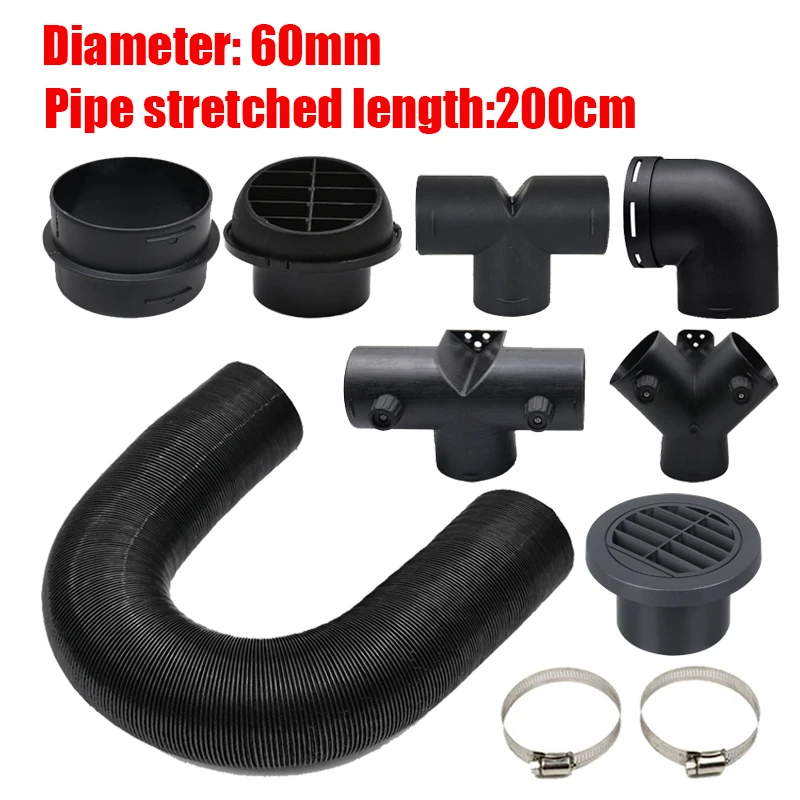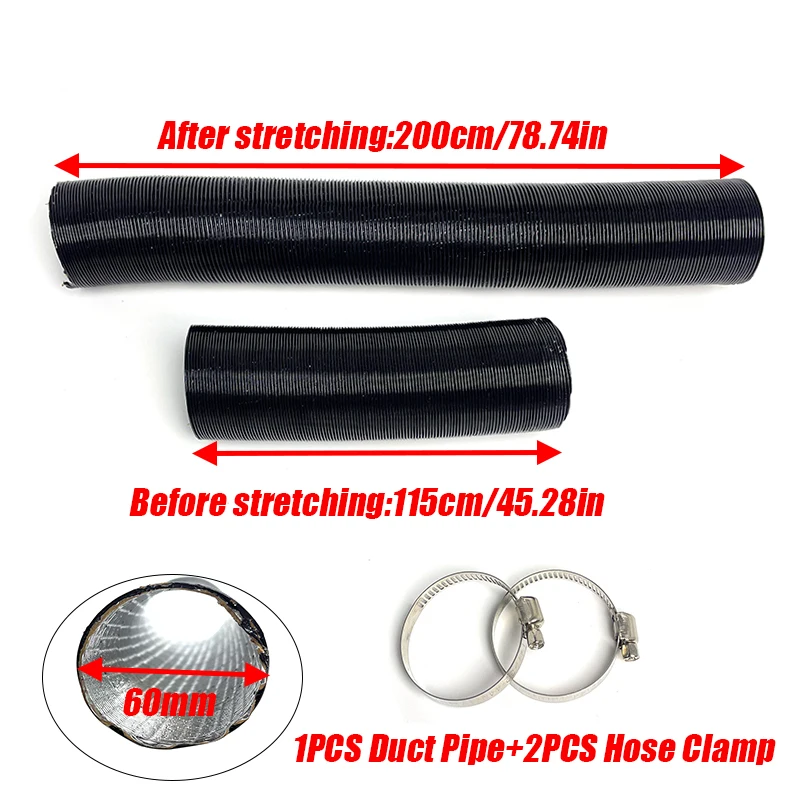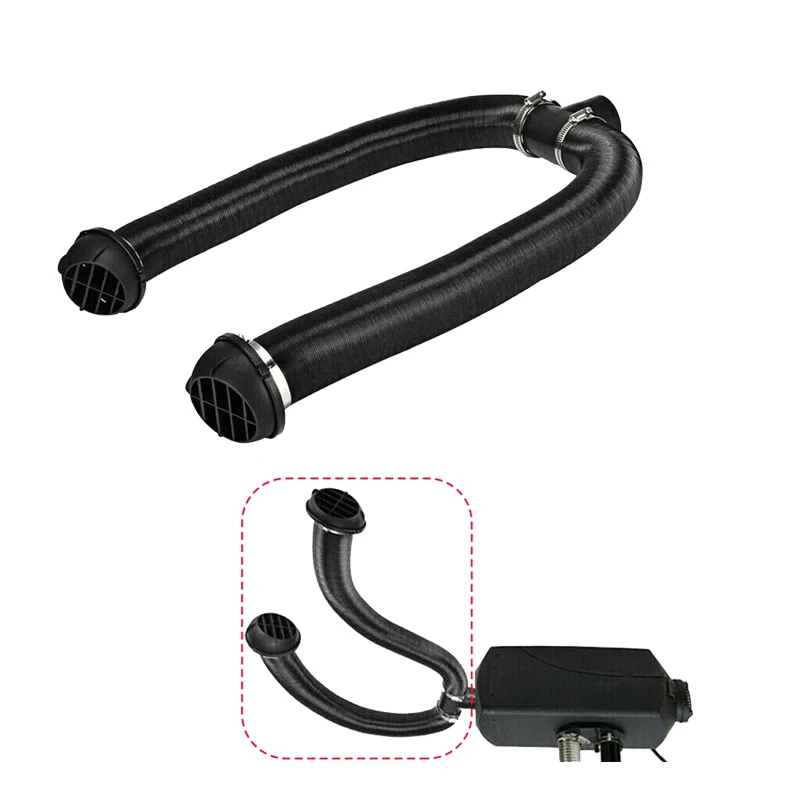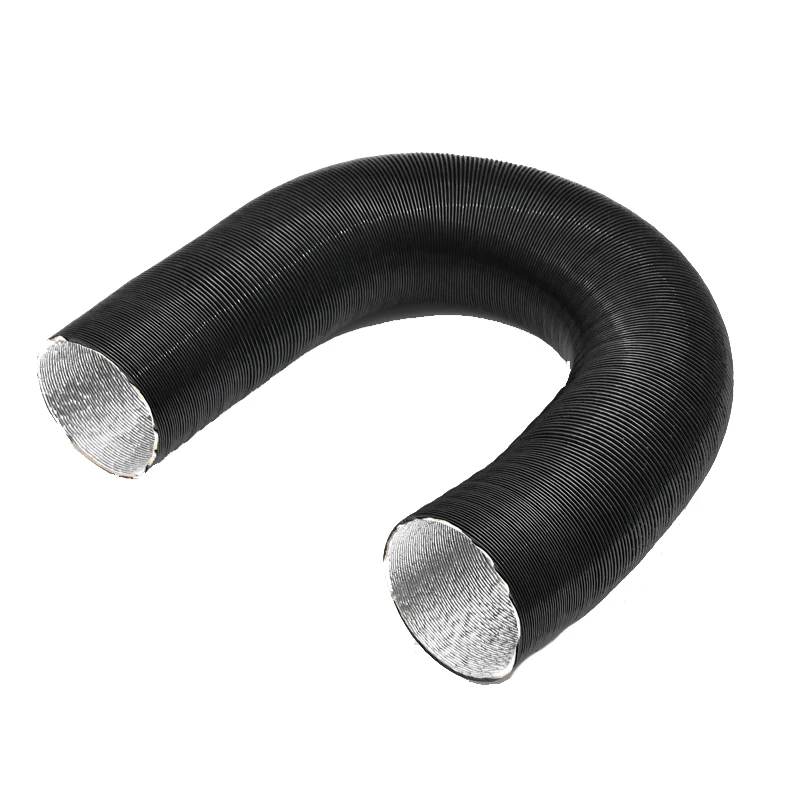
Keywords Longue Traîne avec LSI pour "CHAUFFAGE DIESEL : Le Tuyau Échappement ULTIME (60mm x 200cm) pour Webasto/Eberspaecher !":
- Tuyau d'échappement diesel Webasto Eberspächer, diamètre 60mm, longueur 2 mètres
- Installation tuyau échappement chauffage stationnaire diesel, compatibilité Webasto, Eberspächer, camping-car
- Meilleur tuyau d'échappement pour chauffage diesel Webasto, Eberspächer, résistance haute température
- Tuyau échappement 60mm x 200cm pour chauffage air stationnaire diesel, montage facile, Webasto/Eberspächer
- Remplacement tuyau d'échappement chauffage diesel, références Webasto, Eberspächer, accessoires
- Problèmes de tuyau d'échappement chauffage diesel, fumée, odeurs, Webasto, Eberspächer, diagnostic
- Comparatif tuyaux d'échappement pour chauffage diesel, Webasto, Eberspächer, inox, flexible
- Guide d'achat tuyau d'échappement chauffage diesel, diamètre, longueur, compatibilité
- Prix tuyau d'échappement Webasto, Eberspächer, 60mm x 200cm, accessoires de montage
- Comment installer un tuyau d'échappement pour chauffage diesel, Webasto, Eberspächer, tutoriel
- Tuyau échappement chauffage diesel camping-car, bateau, dimensions, Webasto, Eberspächer
- Tuyau d'échappement chauffage stationnaire diesel, corrosion, durée de vie, Webasto, Eberspächer
- Joints et colliers pour tuyau d'échappement chauffage diesel, Webasto, Eberspächer, étanchéité
- Tuyau d'échappement chauffage diesel 60mm, adaptation, Webasto, Eberspächer, raccordement
- Tuyau échappement Webasto/Eberspächer, performance, optimisation combustion, chauffage diesel
- Chauffage diesel stationnaire, échappement, fumée, problèmes, diagnostic Webasto, Eberspächer
- Réparation tuyau échappement chauffage diesel, fissures, fuites, Webasto, Eberspächer, solutions
- Sécurité tuyau d'échappement chauffage diesel, ventilation, Webasto, Eberspächer, risques
- Trouver tuyau échappement 60mm x 200cm pour chauffage diesel, Webasto, Eberspächer, en ligne
- Meilleur tuyau échappement pour chauffage stationnaire, camping-car, bateau, diesel, Webasto, Eberspächer
- Chauffage diesel Webasto/Eberspächer, dimension tuyau échappement recommandé, 60mm, 200cm
- Kit tuyau échappement chauffage diesel, Webasto, Eberspächer, accessoires, installation complète
- Tuyau échappement flexible chauffage diesel, avantages, inconvénients, Webasto, Eberspächer
- Tuyau inox échappement chauffage diesel, durabilité, Webasto, Eberspächer, résistance à la corrosion
- Chauffage diesel stationnaire, ventilation, échappement, camping-car, bateau, Webasto/Eberspächer
- Remplacement tuyau échappement chauffage Webasto/Eberspächer, installation, conseils, diamètre 60mm
- Odeur d'échappement chauffage diesel, problèmes, solutions, Webasto, Eberspächer, ventilation
- Tuyau d'échappement chauffage camping-car, Webasto, Eberspächer, dimensions, installation
- Tuyau d'échappement chauffage bateau, Webasto, Eberspächer, diamètre 60mm, longueur, conseils
- Compatibilité tuyau échappement, Webasto, Eberspächer, modèles de chauffage diesel.
🔥 CHAUFFAGE DIESEL : Le Tuyau Échappement ULTIME (60mm x 200cm) pour Webasto/Eberspaecher ! 🔥
Audi A1 (2012-2018) : Accoudoir Cuir Noir - Transformez Votre Intérieur !It's heating season again, and that icy bite in the air just whispers two words: diesel heater. Now, I'm no engineer, but I've wrestled with enough of these things in my time to know what's good – and what’s a complete pain in the backside. And trust me, the exhaust pipe situation can make or break your cozy winter hideaway. So, let's talk about the big, bold, and hopefully, the ultimate exhaust pipe: the 🔥 CHAUFFAGE DIESEL : Le Tuyau Échappement ULTIME (60mm x 200cm) pour Webasto/Eberspaecher ! 🔥
Forget Freezing! My Diesel Heater's Exhaust Pipe Adventure (and Why It Matters!)
Okay, let’s be honest, building out my camper van has been a saga. A glorious, frustrating, money-pit saga. And one of the biggest hurdles? Warmth. I’m a sucker for a good winter adventure, but there’s nothing quite like the chill that seeps into your bones when you're miles from civilization. Enter the diesel heater! Genius, right? Except… the exhaust. That blasted exhaust pipe.
The Exhaust Pipe: More Than Just a Tube
You might think, “It’s just a pipe, who cares?” Wrong! Oh so, so wrong. Think of it as the unsung hero, the silent guardian of your sanity. It's the thing that keeps you from, you know, dying from carbon monoxide poisoning while you're dreaming of hot chocolate and mountain views. Choosing the right one? Absolutely crucial.
Why This 60mm x 200cm Beauty? (And Why Size Matters)
We’re talking Webasto and Eberspaecher, two of the big players in the diesel heater game. And for those heaters, a 60mm diameter is often the gold standard. Why? Well, it helps properly vent those nasty exhaust fumes. Think of it like your lungs, but for your heater. Bigger pipes mean better airflow, less backpressure, and hopefully, a longer life for your precious heater. And that 200cm length? Gives you flexibility for routing the exhaust safely away from the van. More on that later… shudders.
The First Attempt: A Lesson in Patience (and Duct Tape)
My first exhaust pipe experience? Let's just say it was… educational. I was young, foolish, and in a hurry. I grabbed whatever cheap-ass pipe I could find at the local hardware store. Didn't measure. Didn't think. Just bolted it on. (Don’t judge, we’ve all been there, right?) Fast forward a few weeks, and my van smelled faintly of diesel with a distinct undercurrent of… sadness. The pipe was too small, ill-fitting, and I had a truly terrifying (and thankfully short) moment where I believed I had accidentally set it on fire. Duct tape became my temporary friend. It was a disaster. A glorious disaster that taught me the value of doing things right the first time.
The Duct Tape Era: A Comedy of Errors
Oh, the duct tape! I swear, I could have built a whole other van out of the stuff. It held things together, kind of, until it didn't. The fumes? The leaks? The constant anxiety of setting the whole thing ablaze? Let’s just say it wasn’t ideal. The memory still triggers a tiny, involuntary twitch in my eye. So, yeah, lesson learned: Invest in quality, people!
Diving Deep: Unpacking the "ULTIMATE" (Potentially)
Alright, so we're moving up the ladder from duct tape dreams to… something better. This specific 60mm x 200cm pipe promises performance. But what makes it ultimate? Let’s break down the features and see if it lives up to the hype.
Material Matters: Stainless Steel vs. The Rest
This is where things get interesting. Cheap pipes rust. They corrode. They… well they just fall apart. The "ultimate" probably means stainless steel. That's what you want. Stainless steel is durable, resistant to heat and corrosion, and hopefully, designed to last. Why is this important? Aside from avoiding nasty fumes leaking into your living space? This pipe has to withstand some serious heat, and the elements. Winter, salt, moisture… if you're running a heater in a van, those conditions are your reality. Stainless steel will give you the best bang for your buck.
Installation: Pray You're Handy or Pay a Pro!
Warning: Installation can be tricky. It involves getting under your van, sometimes wrestling in cramped spaces. Let's be honest, it's not always fun. You'll need to bend and shape the pipe, secure it properly, and ensure a good seal to avoid any leaks. My advice? Watch all the YouTube videos. More than once. And if you're not comfortable with the process? Pay someone. Your lungs (and your sanity) will thank you. Honestly, after my duct tape experience, I'd pay anyone.
My Personal Test Drive (and My Anxiety Spiral)
So, I finally installed this "ultimate" pipe. Finally. I'm not gonna lie, the process involved a lot of swearing, a few scraped knuckles, and a nagging fear that I'd screwed it up again. But I persisted. I routed it carefully, making sure it was secured properly, and directed the exhaust away from anything flammable.
The Moment of Truth: Will it Blow Up?
Turn the heater on… Hold your breath… Listen for the familiar purr. Smell… cautiously. If it’s good, you’re in the clear! If not… well, time to get the hose out, and a fire extinguisher handy. I was genuinely nervous. That first test run? Pure, unadulterated relief when everything worked as it should. The van was toasty, the air was clean, and I could finally breathe easy, literally.
The Ongoing Saga: Living with the "Ultimate" Pipe
Now, some time has passed. I've put the pipe through its paces. Harsh weather, long journeys, and the occasional accidental bump. So far? So good. It's performing flawlessly. It’s a small thing, but it makes a huge difference. I can now enjoy my winter adventures without the constant worry of carbon monoxide poisoning or, you know, spontaneous combustion. .
Final Verdict: Is This Pipe Really "Ultimate"?
Okay, the question we've all been waiting for: Is this exhaust pipe truly "ultimate"? I'm hesitant to give it the absolute title because nothing is perfect. But, it is far better than previous options. It's a solid piece of kit. It’s certainly a massive improvement over the duct tape era! If you're in the market for a 60mm x 200cm exhaust pipe for your Webasto or Eberspaecher, this one's definitely worth considering. It's durable, reliable, and a world away from the nightmare of a poorly installed exhaust.
The Takeaway: Invest in Your Safety (and Your Sanity!)
Ultimately, this whole exhaust pipe saga has taught me a few things. First, don't skimp on quality. Second, take your time (unlike me, initially!). And third, that a well-functioning exhaust pipe is essential. It is more than just a tube. It's a shield. It's peace of mind. It's the difference between enjoying a cozy winter getaway and ending up freezing and possibly poisoning your way out. So, go forth, embrace the cold, and choose your exhaust pipe wisely! You won't regret it. Now, if you’ll excuse me, I’m going to go make some cocoa and enjoy the warmth. That's the dream right there.


1. Pourquoi diable avoir besoin d'un tuyau d'échappement "ULTIME" pour mon chauffage diesel ? C'est pas juste un bout de tube, ça ?🤔
Ah, mon ami... tu poses une question existentielle ! 🤣 Oui, techniquement, c'est un bout de tube. Mais c'est *le* bout de tube qui sépare ton cocon douillet de la fumée malodorante et potentiellement mortelle. Imagine...tu es en pleine montagne, -20°C, et ton Webasto/Eberspaecher décide de te lâcher avec un tuyau pourri qui fuit. Tu te retrouves avec l'odeur du gasoil dans le camion, glacé, et prêt à hurler à la lune. C'est là que tu comprends l'importance cruciale de ce "bout de tube". Un tuyau de merde = une expérience de merde. Un tuyau ULTIME... c'est la sérénité, la tranquillité d'esprit, la promesse d'un hiver chaleureux. 🔥
2. 60mm x 200cm... C'est quoi ces chiffres ? Ça veut dire quoi, exactement ?
Bonne question ! 60mm, c'est le diamètre du trou par lequel la fumée s'échappe. Plus le chauffage est puissant, plus il faut un diamètre large pour que les gaz s'évacuent correctement. 200cm, c'est la longueur. Ça te permet de le faire courir sous ton véhicule, de le diriger loin de tes fenêtres... Tu veux pas respirer ça, crois-moi. J'ai déjà eu un tuyau trop court qui crachait la fumée directement dans l'auvent... Horrible. J'ai passé une nuit à ouvrir toutes les portes et fenêtres, en grelottant et en maudissant le gars qui m'avait vendu ce truc. 😫
3. Webasto ou Eberspaecher... Ça change quelque chose pour le tuyau ?
Grosso modo, non. Les deux marques sont les reines des chauffages diesel. La plupart du temps, ce type de tuyau est universel et s'adapte aux deux. Mais, PAR PRUDENCE (parce que j'ai déjà fait l'erreur de penser que tout est universel... 🤦♂️), vérifie toujours la compatibilité avec ton modèle spécifique. C'est comme acheter des chaussures : c'est la pointure qui compte, pas la marque, mais quand même, mieux vaut essayer avant d'acheter pour être sûr !
4. Acier inoxydable vs. Acier galvanisé... Quoi choisir ? Et c'est quoi la différence, au fait ? 🤔
Ah, la grande question philosophique ! L'acier inoxydable, c'est le must. C'est résistant à la corrosion, à la rouille, aux intempéries... Bref, il va durer des années. L'acier galvanisé est moins cher, mais il rouillera plus vite, surtout si tu roules sur la côte ou dans des climats humides. Imagine-toi : tu investis dans un chauffage, tu économises pour ton van, et tu essaies de gratter sur le tuyau... Mauvaise idée ! Après un hiver, tu as un tuyau rouillé, percé, et tu vas devoir le racheter. Tu aurais mieux fait d'investir dès le départ. J'ai fait l'erreur une fois. Deux fois. J'apprends lentement, je crois. 🙄
5. Installation... C'est facile, ou je suis condamné à demander de l'aide à un pro ? 😭
Ça dépend de ton niveau de bricolage, mon cher. Si tu sais manier une clé, un tournevis, et que tu comprends comment fonctionne le principe "les gaz d'échappement sortent par là", tu peux le faire toi-même. Généralement, il y a des colliers pour fixer le tuyau, des joints pour l'étanchéité... C'est pas sorcier. Mais, si tu as des doutes, ou si tu es plus à l'aise avec un café qu'avec une clé à molette, n'hésite pas à demander à un professionnel. Mieux vaut payer un peu pour être sûr que ça fonctionne correctement et éviter les fuites de fumée... et les nuits glaciales ! Et si tu te rates, tu peux toujours te consoler en te disant que tu as appris quelque chose. Moi, j'ai appris à ne *jamais* installer un tuyau d'échappement un soir de pleine lune. C'est une histoire que je raconterai un jour... 🤫 (ça n'a rien à voir en fait, mais je voulais donner un peu de mystère...)
6. Et si je veux le cacher pour que ce soit plus "propre" ? Des conseils ?
Ouh là, tu veux faire le malin ! C'est vrai que le tuyau qui pendouille sous le van, c'est pas le plus esthétique. Tu peux le faire courir le long du châssis, le cacher derrière le pare-chocs... Mais fais attention à la chaleur ! Il faut absolument qu'il soit bien isolé et qu'il ne touche rien qui pourrait fondre ou prendre feu. J'ai vu un gars qui avait mis le tuyau trop près du réservoir de gasoil... j'ai eu peur pour sa vie ! Sinon, tu peux toujours adopter le look "van de baroudeur", avec le tuyau bien visible. Ça a du charme aussi, non ? 😎
7. Le prix... Est-ce que ça va me ruiner ? 💸
Ça dépend. Si tu prends le tuyau le plus cher, en acier inoxydable, avec toutes les options... oui, ça peut te faire un trou dans le budget. Mais, tu vas quand même pas te ruiner non plus. En général, tu peux trouver un bon tuyau pour un prix raisonnable. Compare les prix, regarde les avis des autres acheteurs... Et n'oublie pas que la qualité a un prix. C'est mieux d'investir un peu plus dans un bon tuyau que de racheter un tuyau de merde tous les six mois. Moi perso, je suis toujours à la recherche du meilleur rapport qualité/prix. C'est une quête sans fin, mais c'est passionnant, tu trouves pas ? 😜
8. On dit que ça fait du bruit... C'est bruyant, vraiment ?
Un peu, oui. C'est un chauffage diesel, pas un thermostat silencieux. Il y a un bruit de combustion, et le tuyau vibre. C'est pas le bruit d'un avion au décollage non plus. Mais, au début, on y fait attention. Après, on s'y habitue. Et quand il fait froid, on l'oublie complètement. Et puis, tu peux toujours




